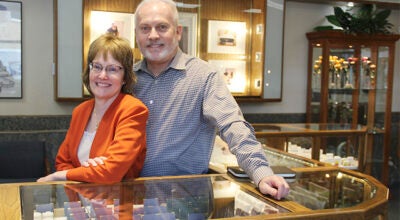X-rays show more than just cavities
Published 11:15 am Monday, April 21, 2014
By Rachel Nolander Poppel
Why are X-rays needed at the dentist, and what are digital X-rays and why are these better than traditional X-rays?
When you visit the dentist, the dentist and his or her team are responsible for diagnosing your oral health status. For the dentist to be thorough and not miss any important findings, it is very important for he or she to review dental X-rays regularly. Your visual exam only shows surface problems, and most dental problems lie under the surface. Cavities between the teeth can be found when they are still small on X-rays. If you can see a cavity with a naked eye, or worse yet, feel a hole with your tongue, then it is a big cavity that can be much more painful and costly to repair than a small cavity caught early.
X-rays don’t only show cavities. They also allow your to dentist examine the amount of bone support to the teeth, an indicator of periodontal disease. X-rays also permit the dentist to check for any pathology such as cysts, tumors or cancers in the jaws.
Digital X-rays, properly called dental radiographs, are faster and more efficient than traditional X-rays and have several benefits: One of the greatest benefits is reduced radiation. The sensor used with digital X-rays is more sensitive to radiation than traditional X-ray film, so less radiation is needed per X-ray, resulting in lower amounts of radiation to the patient.
With digital radiographs, an electronic sensor (instead of film) is placed in your mouth to capture the image. The digital image is then relayed to a computer, where it is available for viewing immediately. This makes digital radiographs much faster, since traditional X-ray film needs to be processed, which can take five to 10 minutes.
Digital radiographs can also be stored on the computer and then compared against previous or future images to see how your dental health is being maintained. Traditional radiographs are much more difficult to keep organized, and the image quality deteriorates over time.
Digital dental radiography is one of the most significant recent advancements in dentistry.
Rachel Nolander Poppel is a dentist at Albert Lea’s Advanced Family Dental.



